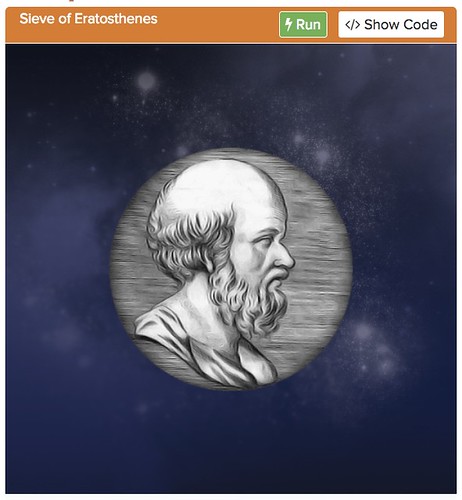:: screen shot ::
Given I'm spending time with 5th and 6th graders as their Python teacher, I've been looking at Oregon's version of Common Core, and, sure enough, that's an age where students learn the difference between prime and composite numbers.
The so-called Natural Numbers, or Whole including zero, form a comforting world of integer types and operations, especially number sequences, like at OEIS (On-line Encyclopedia of Integer Sequences).
What I'd recommend to teachers are the two books Gnomon, by Midhat Gazale, and The Book of Numbers, by Conway and Guy as a way of motivating course prep around number sequences.
In addition to prime and composite, we have such as the triangular numbers, square numbers and then, off the plane (moving into space), tetrahedral and half-octahedral numbers.
Here's our transition to sphere packing and space-filling, analogous to tiling on a plane (tessellation -- already a favorite elementary school topic). 1, 12, 42, 92...
Back to primes, I'm also seeing 6th grade as a time when we pick up more keyboard skills. Coding with Kids has them moving from block-based programming (sliding puzzle pieces around) to more lexical languages, such as Python.
To that end, I wrote yet another Sieve of Eratosthenes. Such programs are an old standby in computer science, meaning I'm being very correct and conservative in my approach.
My agenda is to promote C-STEM or C-STEAM in a way that doesn't lose sight of Synergetics.
Good meetup with a NW Process Institute guy today over lunch. I was hoping to catch Arnold Mindell in action on Friday but ended up working a new teaching assignment instead.

